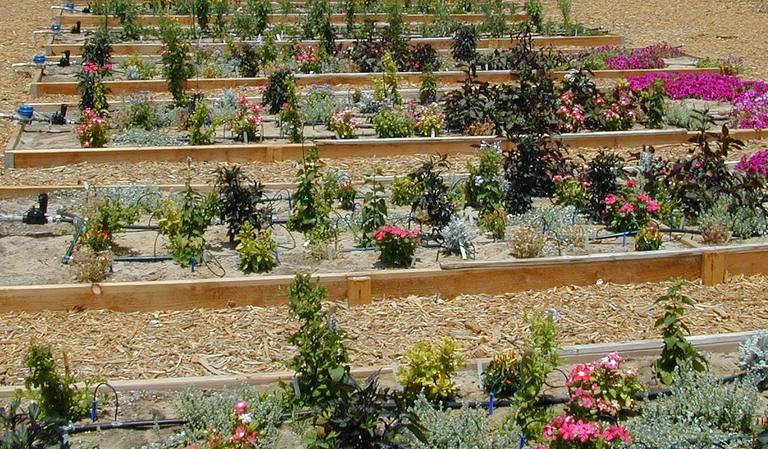Drought-Resistant Gardening Tips

Gardening Tips for Drought-Prone Areas: Thrive in Dry Conditions
Gardening in drought-prone areas can be a challenge, but with the right strategies, you can create a beautiful, resilient landscape. Let's dive into some practical gardening tips for drought-prone areas that focus on water conservation, drought-tolerant plants, efficient irrigation, soil management, and xeriscaping.
Understanding Drought-Resistant Gardening
Drought-resistant gardening is all about making the most of limited water resources. It's like teaching your garden to live on a budget, water-wise. The goal is to create a sustainable landscape that can thrive with minimal water input.
Water Conservation: Every Drop Counts
Why Save Water?
Water is a precious resource, and every drop counts, especially in drought-prone areas. By conserving water in your garden, you're not only helping the environment but also reducing your water bill.
Efficient Irrigation: Watering Wisely
Drip Irrigation: Your Garden's Best Friend
Drip irrigation is a game-changer for drought-prone areas. It delivers water directly to the roots of your plants, minimizing evaporation and runoff. Think of it as giving your plants a drink of water directly from a straw, rather than pouring a bucket over their heads.
Timing is Everything
Water your garden early in the morning or late in the evening to reduce evaporation. It's like giving your plants a drink when they're most thirsty, ensuring they make the most of every drop.
Drought-Tolerant Plants: The Superheroes of Dry Gardens
Native Plants: Born to Thrive
Native plants are adapted to your local climate and are naturally drought-tolerant. They're like the locals who know all the best spots in town – they know how to thrive in your garden with minimal effort.
Succulents and Cacti: The Ultimate Drought Survivors
Succulents and cacti store water in their leaves and stems, making them perfect for drought-prone areas. They're like camels, storing up water for when it's scarce.
Soil Management: The Foundation of Your Garden
Improve Your Soil's Water-Holding Capacity
Adding organic matter like compost to your soil can improve its water-holding capacity. It's like turning your soil into a sponge that can soak up and retain more water.
Mulching: A Simple yet Powerful Tool
Mulching your garden beds can reduce water evaporation, suppress weeds, and regulate soil temperature. It's like giving your garden a protective blanket that keeps it comfortable and hydrated.
Xeriscaping: The Art of Dry Gardening
What is Xeriscaping?
Xeriscaping is a landscaping method that focuses on water conservation. It's about creating a beautiful garden that can thrive in dry conditions. Think of it as the art of doing more with less.
Designing a Xeriscape Garden
Start by grouping plants with similar water needs together. This way, you can water each zone according to its specific needs. It's like seating guests at a dinner party based on their dietary preferences – everyone gets what they need.
Hardscaping: Beauty Beyond Plants
Incorporate hardscaping elements like rocks, gravel, and pavers into your garden design. They add visual interest and don't require any water. It's like decorating your garden with artwork that never needs to be dusted.
Water-Efficient Landscaping: A Holistic Approach
For more ideas on water-efficient landscaping, check out the EPA's guide on water-efficient landscaping. It's a treasure trove of information that can help you create a beautiful, water-wise garden.
Maintaining Your Drought-Resistant Garden
Regular Pruning: Keeping Plants Healthy
Regular pruning helps keep your plants healthy and encourages new growth. It's like giving your plants a haircut to keep them looking and feeling their best.
Weeding: The Never-Ending Battle
Weeds compete with your plants for water and nutrients. Regular weeding ensures your plants get all the resources they need. It's like kicking out party crashers who are eating all the food.
Conclusion: Embrace the Dry
Gardening in drought-prone areas doesn't have to be a challenge. With the right strategies and a shift in mindset, you can create a beautiful, resilient garden that thrives in dry conditions. Embrace the dry and enjoy the unique beauty of a drought-resistant garden.
FAQs
Q: What are the best drought-tolerant plants?
A: Some of the best drought-tolerant plants include native plants, succulents, cacti, and Mediterranean herbs like lavender and rosemary.
Q: How often should I water my drought-resistant garden?
A: The frequency of watering depends on your specific plants and climate. However, a good rule of thumb is to water deeply but infrequently to encourage deep root growth.
Q: Can I still have a lawn in a drought-prone area?
A: Yes, but consider replacing traditional grass lawns with drought-tolerant alternatives like buffalo grass, or reduce the size of your lawn to minimize water usage.
Q: How can I collect rainwater for my garden?
A: You can install rain barrels or cisterns to collect rainwater from your roof. This water can then be used to irrigate your garden.
Q: What is hydrozoning?
A: Hydrozoning is the practice of grouping plants based on their water needs. This allows you to water each zone according to its specific requirements, conserving water and ensuring each plant gets what it needs.
0 Response to " Drought-Resistant Gardening Tips"
Post a Comment